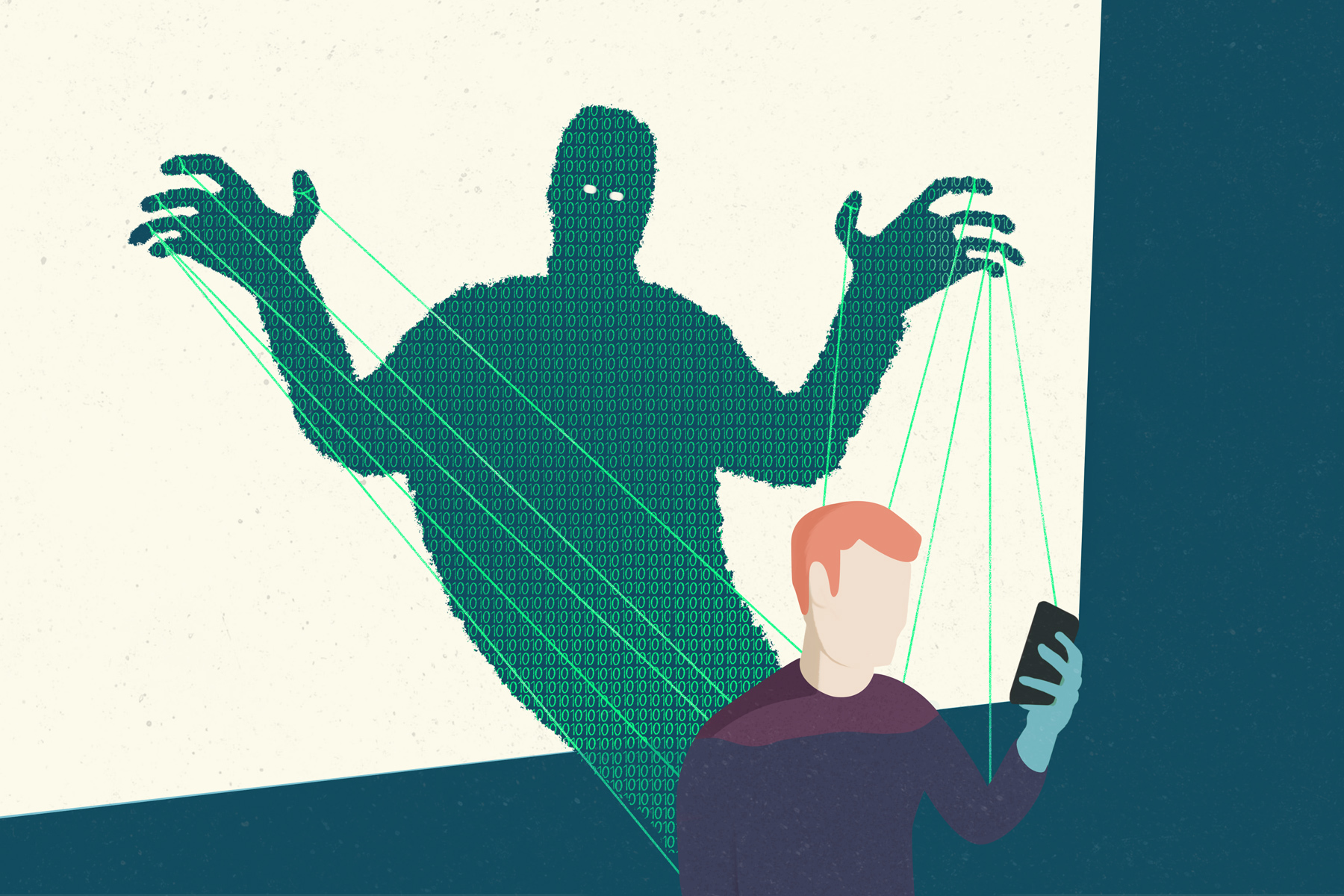When walking through a college campus, it is hard to spot someone without a phone in their hand. Whether it’s a group of sorority sisters taking a group selfie, a grad student walking to class listening to music or a freshman scrolling through Instagram, smartphones have become an unavoidable staple in the lives of college students.
The latest Netflix film, “The Social Dilemma,” examines how social media is becoming more addictive with each passing year and how a seemingly good invention has unexpectedly caused many adverse effects. Coupled with hard-hitting interviews, the movie follows the narrative of two teen siblings influenced by the pressures of social media. The documentary-drama is engaging, thought-provoking and strikingly captures the harm that is being caused by society’s addiction to technology.
Here are five important takeaways from “The Social Dilemma” that will convince you to spend less time on your phone:
1. Big-tech companies sneakily cash in on your information
Everyone can relate to the feeling of dread when an advertisement pops up in the middle of watching a YouTube video or listening to Pandora. The 30 seconds of nonsensical chatter that follows seems to last forever until finally the show or music resumes. When listening to ads, many viewers might think that the product is what is being sold, when in fact, it is the listener’s attention that is being traded by the streaming service to advertising companies. The ads you see are specifically curated to your preferences and virtually any website you use is consistently selling your attention to the company that will pay the highest price.
One saying at the heart of “The Social Dilemma” holds true: “If you’re not paying for the product, then you are the product.” While it might seem like Facebook is just a website for connecting with family, and Snapchat is another way to see pictures of your friends, keep in mind that the goal behind these apps is to keep you engaged and watching more ads so that they can make a profit.
2. Social media apps and websites are designed to be addictive.
In the film, experts further discuss how social media apps are built to subconsciously keep you returning to their platform. Social media websites use positive intermittent reinforcement to keep you refreshing your newsfeed in hopes of seeing a new comment or update from a friend. Tristan Harris, a former Google design ethicist interviewed in “The Social Dilemma,” compares the checking of notifications to playing a slot machine in Vegas: If there is a like, comment or update, users are more likely to come back and check it again.
The inventor of the Facebook “like” button, Justin Rosenstein, speaks out in the film and explains that his original creation was meant to bring joy to the lives of others. The feature is now a symbol of popularity and encourages young adults to photoshop their bodies or perform life-endangering stunts to get more likes than their peers. The addictive quality of receiving likes is like that of taking a drug, both of which release dopamine in the brain, and will have users doing whatever it takes to get more.
Teenagers and college students are especially susceptible to becoming addicted to sites like TikTok, Snapchat, Twitter and Instagram. At a point in life when young adults are yearning to connect with friends and romantic partners, social media companies are implementing more addictive features to draw users in.
A recent survey at Ohio State University found that the daily average screen time for students was approximately 4.5 hours. There are no signs of this usage decreasing, especially with technology getting exponentially more addictive each day. Since the beginning of the pandemic and stay-at-home orders in March, more than 50% of adults in the United States have reported spending more time on social media. Technology companies are preying on the subconscious desires of the human mind and will stop at nothing to gain more profit.
3. Internet usage is being tracked and recorded to deliver engaging advertisements.
If you’ve ever wondered why the item you Googled one time consistently shows up as an ad on other websites you visit, the answer is explained in “The Social Dilemma.” The former executive of Twitter, Jeff Seibert, explains in the film, “Every single action you take is carefully monitored and recorded. Exactly what image you stop and look at, for how long you look at it.” The artificial intelligence employed by social media apps takes note of what a user likes and dislikes to algorithmically keep individuals involved in their newsfeeds. If a person expresses interest in a political party, meme or cat video, the AI tracks this information and continues to provide the user with similarly engaging content.
A term coined by Shoshana Zuboff, a professor interviewed in the film, is “surveillance capitalism.” Surveillance capitalism refers to the profiting made from selling the personal data gathered through large scale monitoring of the internet. To ensure that advertisers are broadcasting the right products to their target audiences, websites like Google and Facebook, among others, are amassing multi-faceted data profiles of every single user. The movie showcases the many ways in which social media is claiming the attention, time and privacy of individuals all over the globe.
4. Be a more informed internet user and know that there is hope for the future of social media
“The Social Dilemma” not only presents viewers with the all-too-real scenario of teenagers glued to their phones, but also incorporates interviews with app designers, CEOs and former employees of tech giants like Facebook, Google, Twitter, YouTube, Instagram and more. The testimonies from these experts undoubtedly give the movie a sense of credibility, however, these interviews remind the audience of how social media has spiraled out of the control of its creators. Though the specialists in the movie joined the field because they believed that technology could benefit society as a whole, many of them have left their jobs because of ethical concerns or because they felt that the apps were dishonestly trying to infiltrate the lives of their users.
The employees that work at these companies know the dangerous effects social media has on younger generations but choose to ignore it and continue to make their platforms more addicting. Fortunately, the experts that took part in the film are calling for ethical standards to be put in place to stop these corporations from selling personal data. By federally regulating digital privacy and taxing companies for sharing data, social media giants might reexamine the business model that targets the attention of unsuspecting users.
5. Limit screen time, turn off notifications and find hobbies outside of technology.
Promising to put your phone away is much easier said than done. Even the experts behind the film admit to compulsively checking emails or mindlessly scrolling through Pinterest. Instead of quitting social media completely, it might be easier for individuals to take small steps toward freeing themselves from technology. For example, setting screen time limits, silencing notifications and deleting wasteful apps might be a good start.
The end of the film suggests some other helpful tips like eliminating late-night social media usage and limiting browser tracking. More than that, individuals should be cognizant of how social media platforms are taking advantage of them. Students and young adults should reprioritize what they use their phones for and consider finding a hobby that requires time spent away from technology, like taking up a sport or an artistic craft.
After watching this movie, it is nearly impossible to pick up your phone or watch another advertisement without feeling unwittingly addicted to your device. Hopefully, with the lessons learned from “The Social Dilemma,” students can have the willpower to turn off their notifications, skip watching the ads and stop themselves when traveling down a rabbit hole of TikTok videos. Though you might begin to feel a bit like a Boomer, your mental health and sleep schedule will thank you.

















